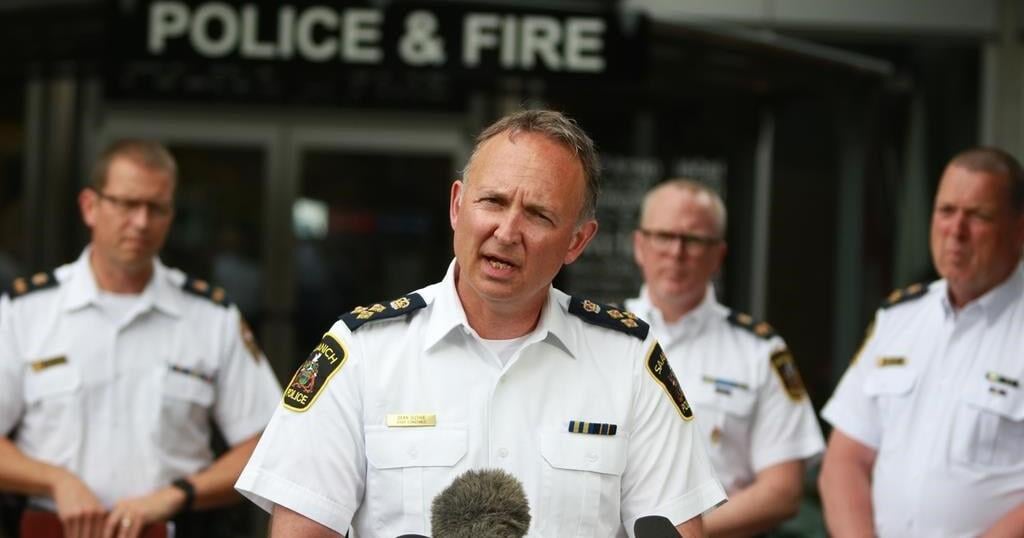VICTORIA – The shootout only lasted 26 seconds but after it ended, two heavily armed brothers were dead and six police had serious gunshot wounds, said Victoria police Staff Sgt. John Musicco.
Musicco was the leader in charge of the Greater Victoria emergency response team on June 28, 2022, and was on another call when they received word that a Bank of Montreal was being robbed in Saanich.
The seven ERT members were just four or five kilometres away.
When they arrived, the team told Saanich officers they would start to transition control to the emergency response team, but just a minute later the gunmen emerged from the bank.
“A challenging” position to be in, Musicco said, speaking at a news conference at Victoria Police Department headquarters on Thursday, ahead of the second anniversary of the incident.
“I’ve had a couple of minutes worth of time to drive to the bank and now I’ve had 60 seconds worth of time to develop a plan and respond to two armed gunman exiting a bank,” Musicco said.
He said it might sound like a short time, but the emergency response team is governed by safety priorities that make decisions easy, ranking the hostages a priority, then innocent civilians, police and the suspects last.
“So, when I see them coming out, now in my mind I have them separate between the hostages and the suspects, and under no circumstance am I going to let them return inside that bank because that’s actually a more challenging problem for me to have to deal with. I decided to initiate a takedown in the parking lot.”
Police fired more than 100 rounds in the 26 seconds that followed, killing 22-year-old twin brothers Mathew and Isaac Auchterlonie. Both men were wearing masks and body armour, and were carrying semi-automatic rifles. Police couldn’t say who shot first.
Six of the seven police officers in the ERT vehicle were wounded.
None of the 22 hostages in the bank were hurt.
Musicco said he was shot in the right foot, the bullet sticking out of his boot. “I can see my life flash before my eyes,” he said, adding he fired numerous rounds from his pistol from the front seat of the van.
In the ensuing days, police described the confrontation as an attempted bank robbery, but a later police report said the brothers weren’t motivated by money, and instead they wanted to shoot and kill police officers.
RCMP Cpl. Alex Berube said as they released the report in January last year that the suspects wanted to take a stand against government regulations, especially as it related to firearms ownership.
It was determined their primary objective was to shoot and kill police, the report said.
The investigation said the brothers had isolated themselves from society and held extreme anti-government and anti-police views.
Police said they found 30 improvised explosive devises, another four firearms and 3,500 rounds of ammunition in a vehicle parked near the bank that the brothers had purchased just a few days before the shootout.
Musicco described his injuries as minor — nerve damage and mobility issues — compared to catastrophic injuries suffered by three of his colleagues. He said he was back on duty eight weeks after the shootout.
He said policing “takes a toll on people,” but protecting lives “trumps the fear and risk,” and the public’s reaction to the police efforts on that day was “unparalleled.”
Gifts and cards with well wishes flooded the detachment, he said. “It helps me to show up here and continue to do this job.”
Musicco said while the decision to confront the men was easy, the consequences of that “crazy day” were huge.
“The emotional kind of healing will take a whole lifetime to go through,” he said.
This report by The Canadian Press was first published June 27, 2024.
